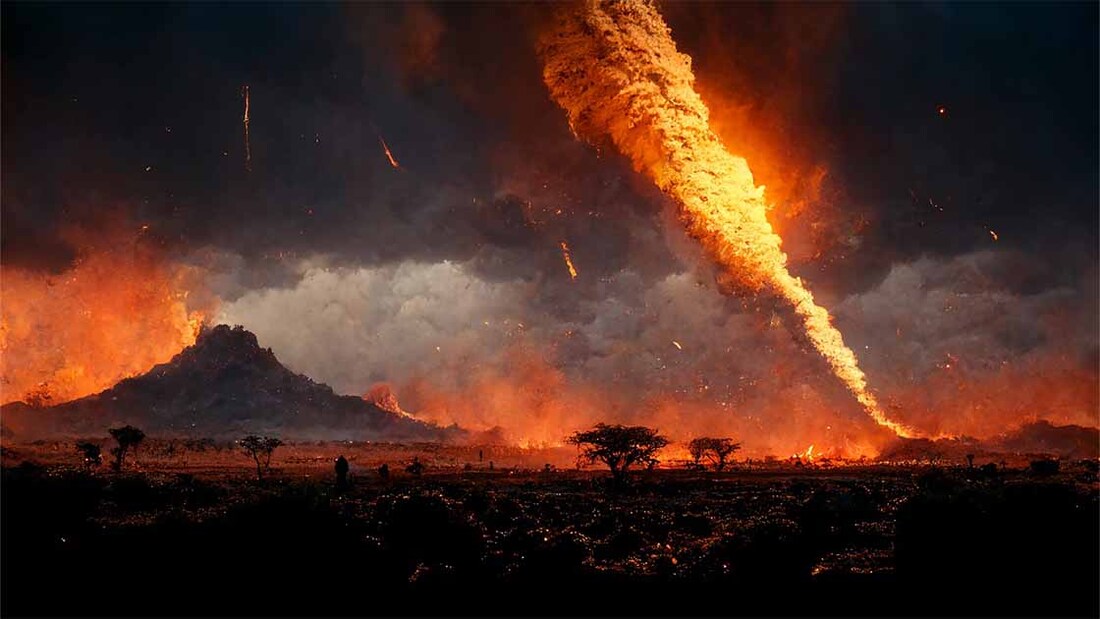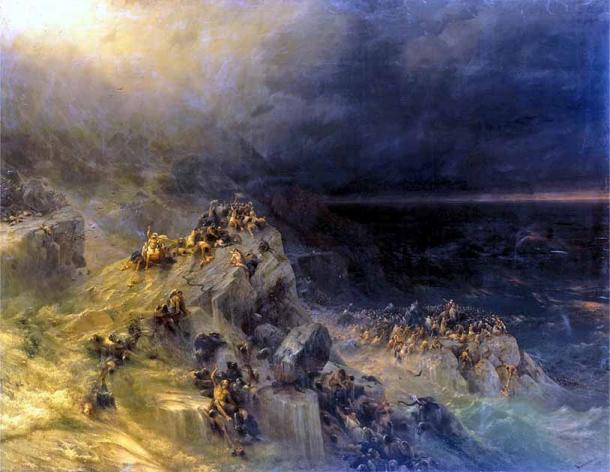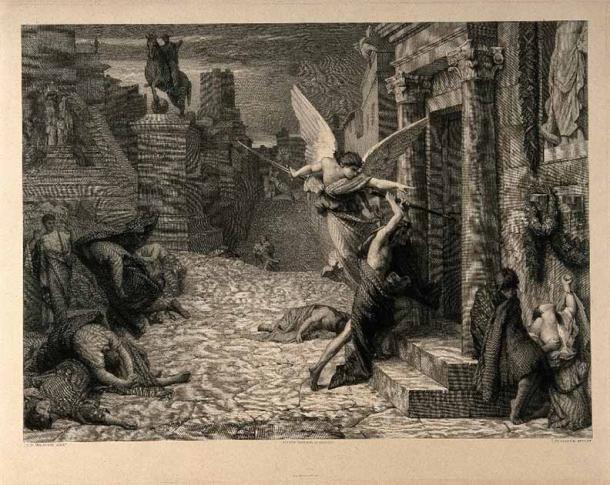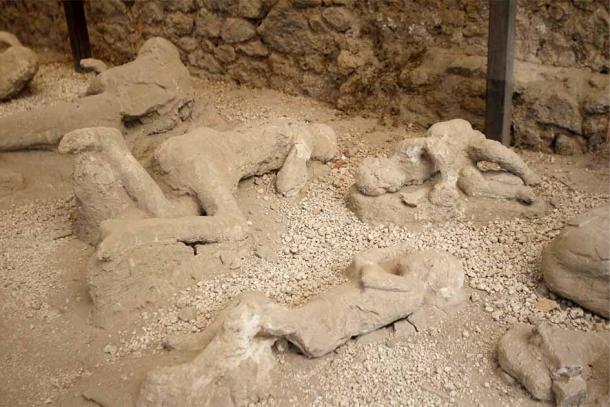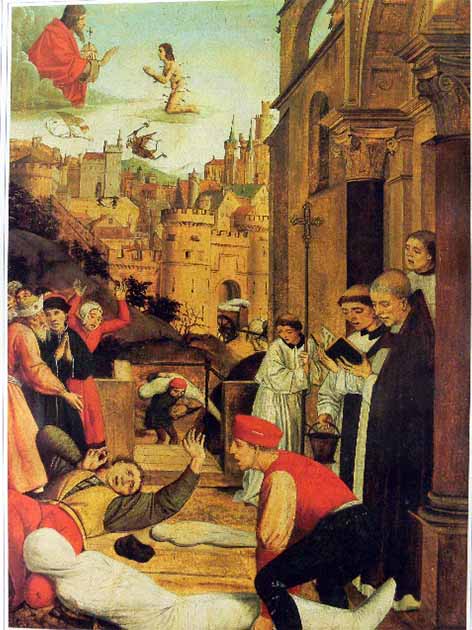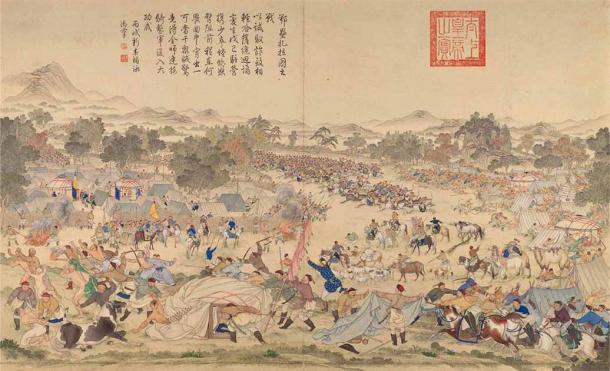|
When studying ancient history, it's sometimes surprising humanity ever made it to the 20th century. Ancient civilizations were repeatedly hit by disasters, both natural and man-made, the likes of which modern civilization has rarely seen. It seems that when nature was trying to wipe us off the face of the map, we were also busy doing it to each other. Here are 7 of the worst disasters to shake the ancient world. 1. The Chicxulub Crater: An Asteroid and a Mass Extinction Event Let’s start with a disaster that predates human civilization by a wide margin, but can confidently be called the greatest natural disaster to have ever shaken the world: the asteroid impact that changed everything. The Chicxulub crater can be found on Mexico’s Yucatan peninsula . Measuring in at 111 miles (180 kilometers) wide and 12.5 miles (20 kilometers) deep, this massive crater marks an asteroid impact from around 66 million years ago. It’s believed that the asteroid was around 6 miles (10 kilometers) in diameter. This may not sound that large, but the speed at which it was traveling meant when it collided with the Earth, it did so with the power of over a billion atomic bombs. Shockwaves were felt around the globe, and winds of up to 600 miles per hour (965 kilometers per hour) scoured the ground surrounding the impact bare. Millions of tons of ash, gases, and debris choked the atmosphere, blocking out the sun and leading to massive global cooling. When this debris began to fall to Earth, it was still so hot that it caused massive wildfires wherever it landed. This all caused an extinction-level event that wiped out up to 75% of all life on Earth during the Cretaceous Period . If this sounds familiar, it is because this is the asteroid strike widely believed to be responsible for the death of dinosaurs. So, really, this is perhaps one we should be grateful for! 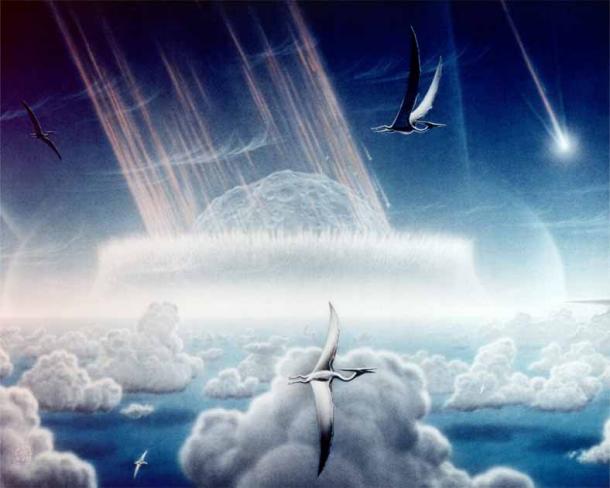 Artistic impression of the asteroid slamming into the ocean near what is today southeast Mexico. The aftermath is believed to have caused the mass extinction of dinosaurs and many other species on Earth, as well as producing a worldwide blackout and freezing temperatures which persisted for at least a decade. (Donald E. Davis / Public Domain ) 2. The Doggerland Tsunami wiped out Prehistoric Inhabitants of the North Sea Around 8,000 years ago, there was an area of land between northern Scotland, Denmark, and the Channel Islands. These islands, known as Doggerland, were home to various Mesolithic tribes and have been described as a prehistoric Garden of Eden. Around 20,000 years ago, sea levels began to surge due to a massive release of meltwater that came from a glacial lake in North America, Lake Agassiz. Sea levels rose by over two feet, and the landmass that had once been Doggerland became submerged, leaving behind a number of islands. All was well, until a massive landslide near what is now modern-day Norway dumped around 3,000 cubic kilometers of earth into the sea. This caused a massive tsunami that totally annihilated the islands and everyone living on them. The wave would have been roughly the same size as the one that devastated parts of Japan in 2011. 3. The Damghan Earthquake that Devastated Ancient Iran On December 22, 856 AD, a magnitude 7.9 earthquake struck a 200-mile (320 kilometer) wide area in modern-day Iran. It is believed the epicenter was located directly under the then-capital, Damghan. The earthquake was caused by the Alpide earthquake belt, the name for the geologic force that helped create the Alps mountain range. This is one of the most seismically active areas in the world. The earthquake caused around 200,000 deaths, the 5th deadliest earthquake in history. While impressive and terrifying on its own, we have to remember that population densities were much, much lower 1,000 years ago. For an earthquake to kill such a high number, it would have had to be truly dreadful. It wasn’t just Damghan which was devastated. The towns of Ahevanu, Astan, Tash, Bastam, and Shahrud all saw heavy damage. Hecatompylos, the former capital of the Parthian Empire , was completely destroyed. Water supplies were also affected. A shift in the water table meant springs and qanats (an early aqueduct system dating back to 3000 BC) dried up, and landslides dammed streams. Many people who were not killed outright by the quake died as a result of losing their water supply. 4. The Antonine Plague nearly brought Rome to its Knees Between 165 and 180 AD, the Roman Empire was stricken by a terrible plague, called the Antonine plague after one of its potential victims, Marcus Aurelius Antonius. The plague is also known as the plague of Galen, after the Greek physician who documented the disease. By studying Galen’s notes, modern historians have concluded that the plague was caused by a particularly deadly form of smallpox or measles. It is believed the disease was brought to the empire by Roman soldiers who were returning home from battles in the East. The plague spread quickly, until there were infections all over the empire itself and even spreading to some tribes in the north. It’s believed that up to five million people died from the disease. During its second outbreak, historian Dio Cassius recorded that around 2,000 people a day were dying in Rome alone. This means that roughly one in four who were infected died, giving the disease a 25% mortality rate. 5. The Eruption of Mount Vesuvius Buried Two Major Towns for Centuries Mount Vesuvius is perhaps the most famous volcanic eruption in recorded history. Before the volcano erupted in 79 AD, it was kind enough to warn the surrounding populace with an earthquake. Sadly, this warning was ignored. What came next was a truly cataclysmic eruption. A deadly cloud of superheated gas spewed 21 miles (33 kilometers) into the sky. Molten rock, pumice, and hot ash rained down from the sky. Pyroclastic flows raced down the mountainside, smothering everything in their wake. Two Roman towns rested in the shadow of Vesuvius. Pompeii was only five miles away, and Herculaneum was even closer. Their residents, who had ignored the foreshadowing events, choked on ash, burned to death, and were then smothered in debris and cooling pyroclastic lava. The combined population of both cities was around 20,000, and the remains of 1,500 people have been found at both sites; the total number of deaths is unknown. Perhaps the most incredible thing about the eruption, however, is what it left behind. Pompeii lay forgotten for centuries until it was rediscovered in 1631 AD, after another eruption hit the area. Then, in the 20th century, the full scale of what had happened was unearthed. Because the pyroclastic flows flooded over the towns so quickly and cooled so rapidly, perfect impressions of the residents were left behind. Their bodies had been entombed in volcanic rock and then rotted away, leaving perfect cavities. These cavities have been filled with plaster, creating near-perfect statues of these people who died nearly 2,000 years ago. These statues give a terrifying glimpse into how these citizens died. Perhaps most terrifyingly, history’s warning hasn’t been heeded. Vesuvius is still regarded as the most deadly volcano on the planet. It is still active and more people live in its vicinity than near any other volcano. Next time it erupts, there could be millions, rather than tens of thousands, of deaths. 6. The Plague of Justinian Killed Millions From 51 to 549 AD, the plague of Justinian devastated the eastern Roman Empire. It swept across all of the Mediterranean, Europe, and the Near East. In particular, the Sasanian and Byzantine Empires were badly affected. Constantinople, the Byzantine capital, was ground zero for the plague. The Justinian plague took its name from the Byzantine Emperor Justinian I , who was in power at the time. According to the contemporary historian Procopius, Justinian was one of the few people who contracted the disease and lived to tell the tale. Most people weren’t so lucky. The plague wiped out roughly one-fifth of Constantinople's population. From there it spread to Roman Egypt in 541 AD and persisted in Europe until 549 AD. While exact figures are uncertain, it has been claimed that during its peak the plague was killing 5,000 people a day in Constantinople. Even worse, by certain estimates, it wiped out as much as one-quarter of the eastern Mediterranean’s human population. Over the next several hundred years, the disease kept reappearing, becoming slightly less virulent and more localized. It has been estimated that over the course of this series of plagues, the death toll was between 40 million and 100 million people. It is widely believed today that the plague was caused by the bacteria Yersinia pestis . This is the same bug responsible for the bubonic plague (Black Death) of 1347-1351 that wiped out much of Europe. 7. The Three Kingdoms Wars May Have Killed Two-Thirds of China’s Population The Three Kingdoms is a historical period covering 220 to 280 AD, during which China was divided into three dynastic states: Cao Wei, Shu Han, and Eastern Wu. The period was one of the bloodiest in not only Chinese history, but also world history. The period saw almost constant warfare in the region and encompasses Qin’s wars of unification (with estimated casualties of two million), and the Yellow Turban Rebellion (with estimated deaths of three to seven million). Massive battles, where armies of upwards of 500,000 men were fielded, led to the kind of mass slaughter that the West wouldn’t manage to copy until the mechanized warfare of WWI and WWII. A nationwide census taken in 280 AD claimed a total of 2.5 million households and 16 million individuals. A census taken at the start of the period showed closer to 11 million households and 56 million individuals. That’s a discrepancy of nearly 40 million people. This doesn’t necessarily mean 40 million people died during the period. It is commonly believed that 280 AD, due to multiple factors, wasn’t terribly reliable. More conservative estimates put the death toll closer to 12 million. It is unlikely that 40 million people were killed simply as a result of warfare. Instead, modern historians believe this population crash was due to several factors. These were all related to the war and the census failed to take them into account. The period saw a series of famines and plagues ravage the country. Normally, these would have been taken care of by the government, but the lack of governance caused by the constant warfare allowed these natural disasters to go unchecked. This is a classic example of how man-made and natural disasters can go hand in hand. While people are busy massacring each other, nature swoops in to claim the rest. Conclusion Perhaps the most shocking thing about these ancient disasters is how little people have learned from them. We continue to settle on floodplains and along geologic fault lines which are prone to earthquakes, and even at the foot of volcanoes. Despite the constant warnings of scientists, people continue to ignore the threat of rising sea levels. As if the threats posed by nature weren’t serious enough, humanity continues to create its own. The kind of death tolls above pale in comparison to the potential of one nuclear bomb dropped over New York or Beijing - and that’s ignoring the chemical and biological weapons that governments have spent decades perfecting. If COVID-19 taught us anything, it is that modern civilization isn’t untouchable. We are always only one natural or man-made disaster away from destruction. Every time we ignore history’s warnings, we tempt fate. References
Cartwright, M. January 12, 2018. The Early Three Kingdoms Period . World History Encyclopedia. Available at: https://www.worldhistory.org/article/1174/the-early-three-kingdoms-period/ Doggerland. n.d. National Geographic. Available at: https://education.nationalgeographic.org/resource/doggerland Horgan, J. December 24, 2014. Justinian's Plague (541-542 CE) . World History Encyclopedia. Available at: https://www.worldhistory.org/article/782/justinians-plague-541-542-ce/ Pompeii. August 27, 2010. History.com. Available at: https://www.history.com/topics/ancient-history/pompeii#:~:text=Pompeii%2C%20a%20flourishing%20resort%20city,thick%20carpet%20of%20volcanic%20ash. Rowan. J. n.d. The most devastating and deadly natural disasters from ancient history . History.com. Available at: https://www.history.co.uk/articles/the-most-devastating-and-deadly-natural-disasters-from-ancient-history
0 Comments
Your comment will be posted after it is approved.
Leave a Reply. |
News Watch
Mind-opening news articles, editorials, videos & apparel that inspire our readers and help liberate them from the status quo. Stay informed.
Write For UsSpace WatchTop NewsNews Watch Categories
All
|
|
|
HAVE A TIP OR STORY TO TELL? JOIN TODAY & SHARE YOUR STORY!
If you have a breaking news tip or idea, please email: [email protected] Apparently Apparel® is a registered trade name and part of the ZOAT International® brands network. © 2007-2023. All Rights Reserved. Privacy Policy. All art & news content posted on this site is commentary or opinion and is protected under Free Speech. ApparentlyApparel.com is not responsible for content written by contributing artists, authors or news feeds. The information on this site is provided for educational and entertainment purposes only. It is not intended as a substitute for professional advice of any kind. ApparentlyApparel.com assumes no responsibility for the use or misuse of this material.
|
|

